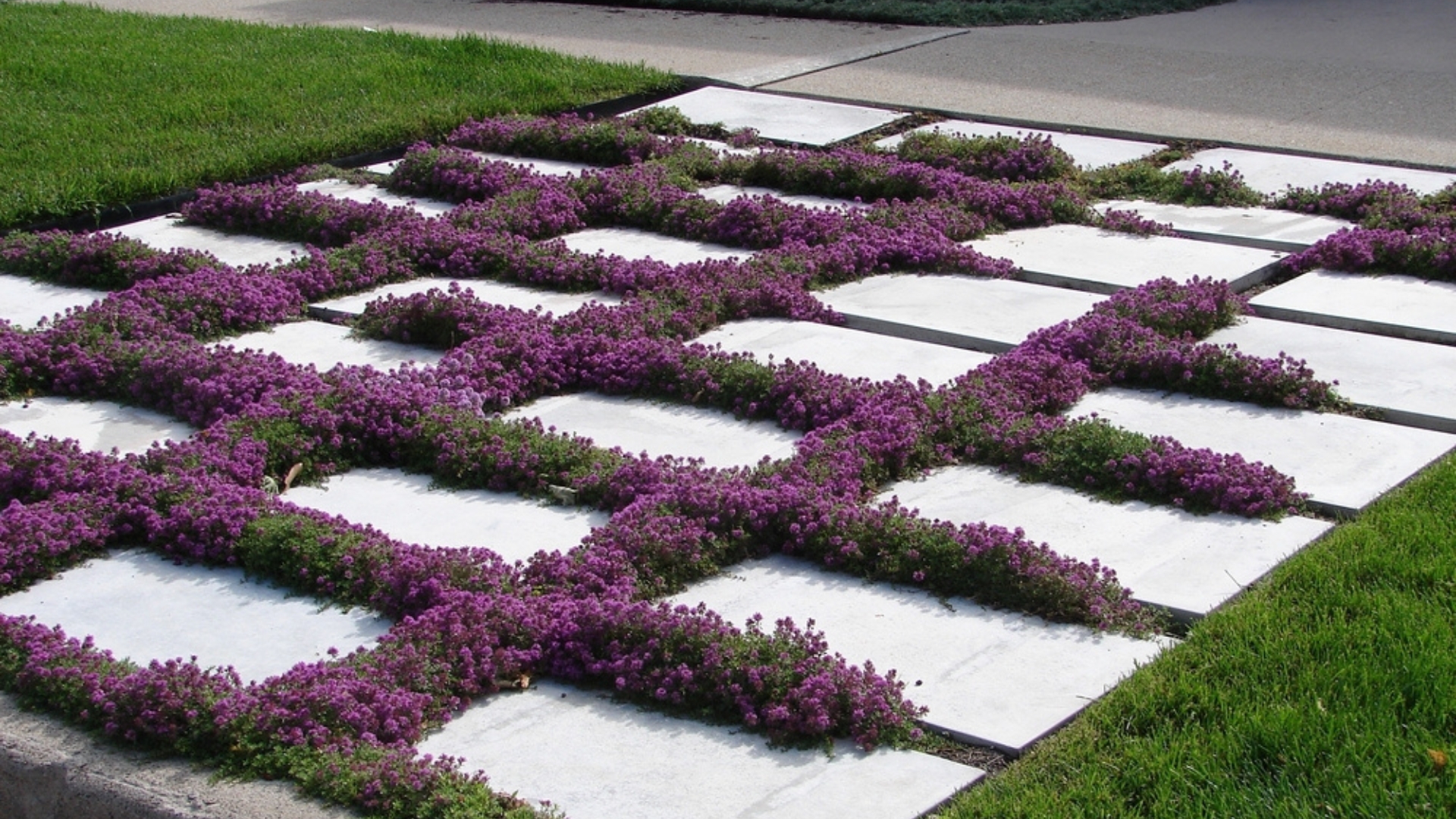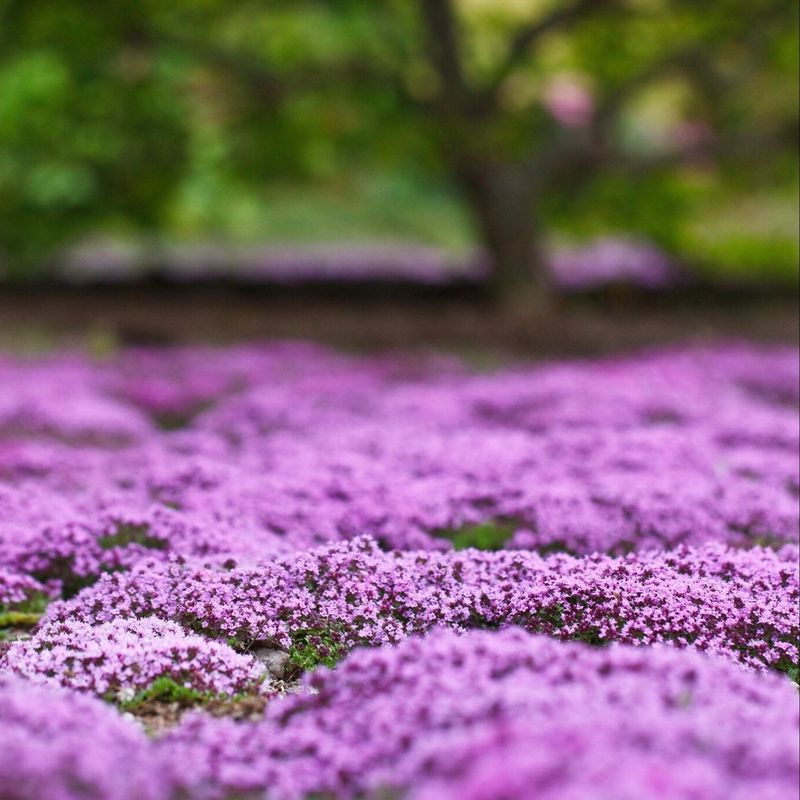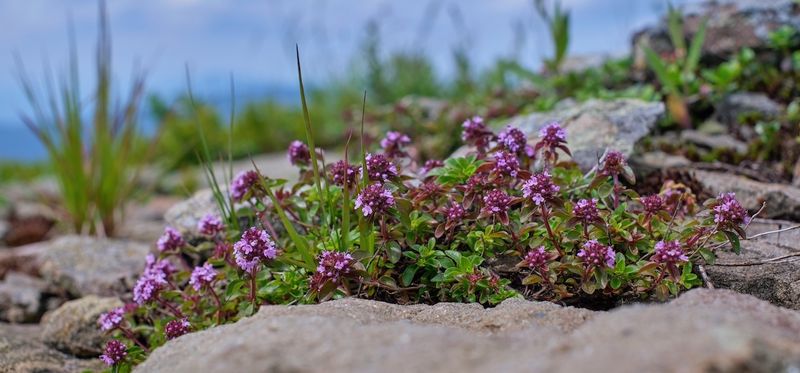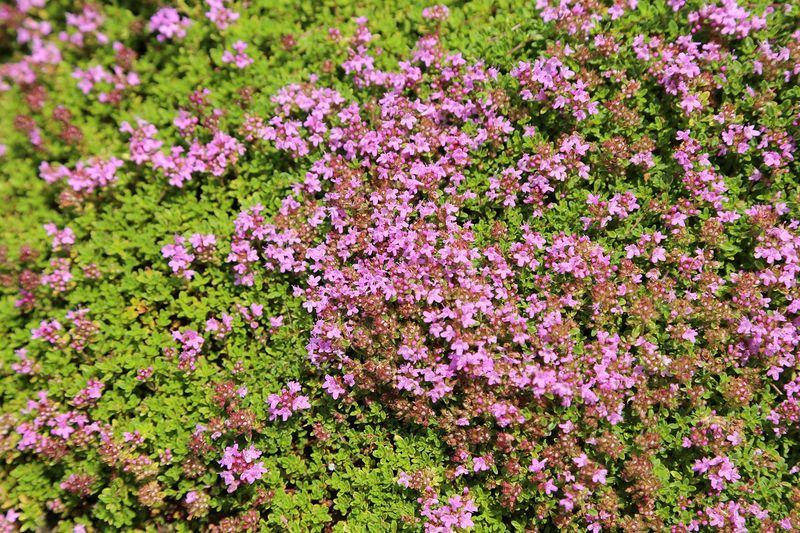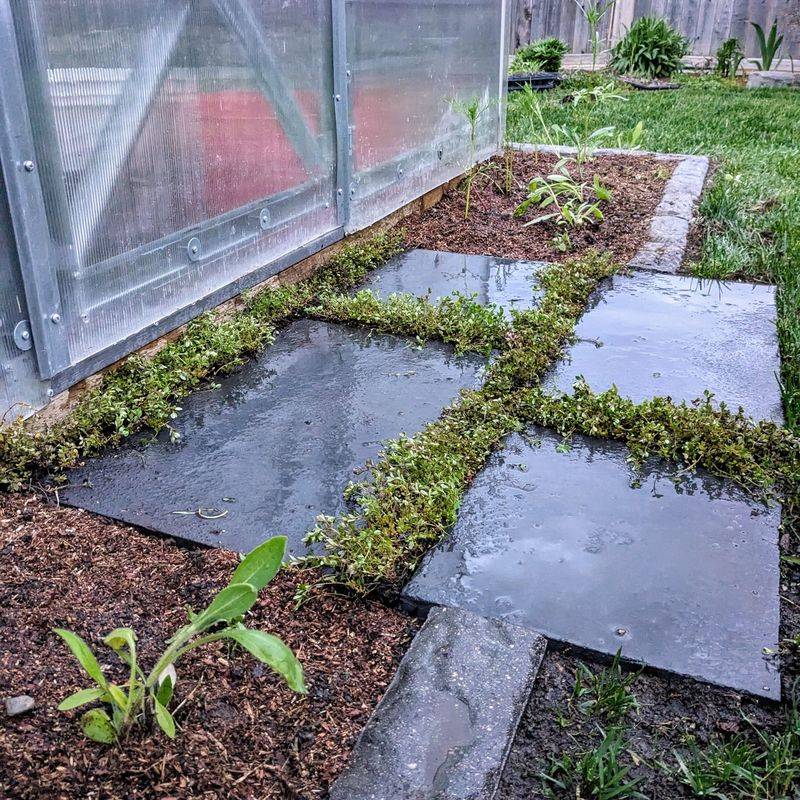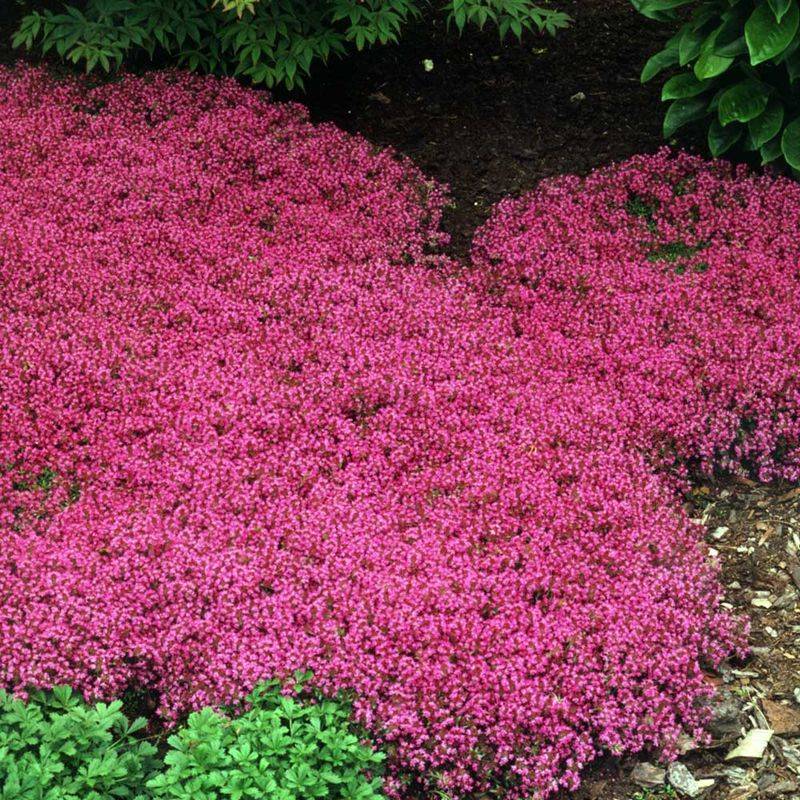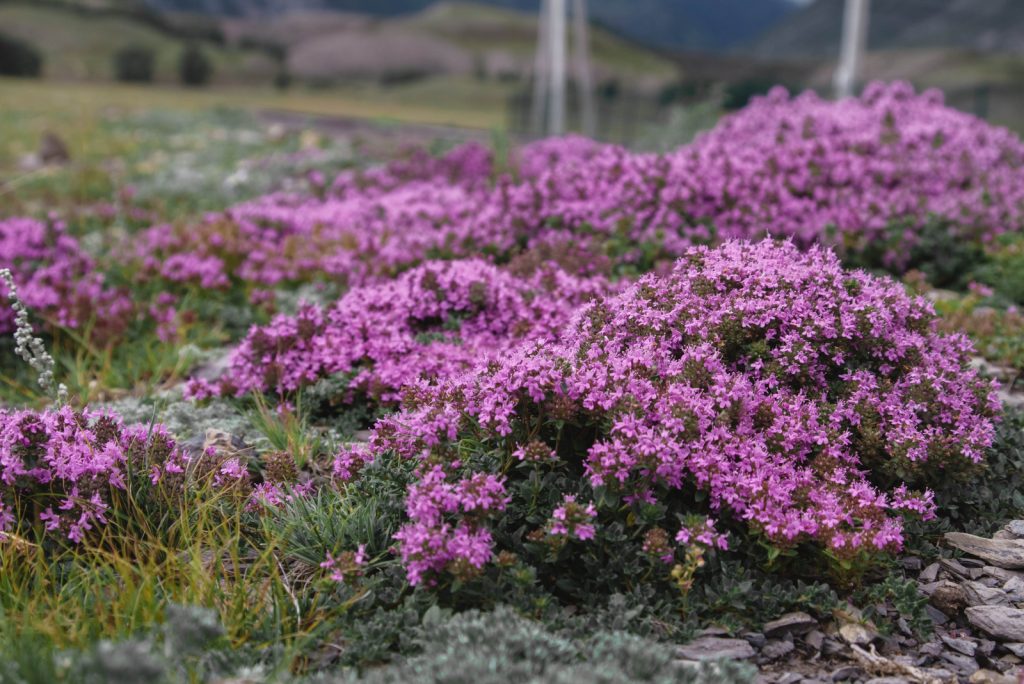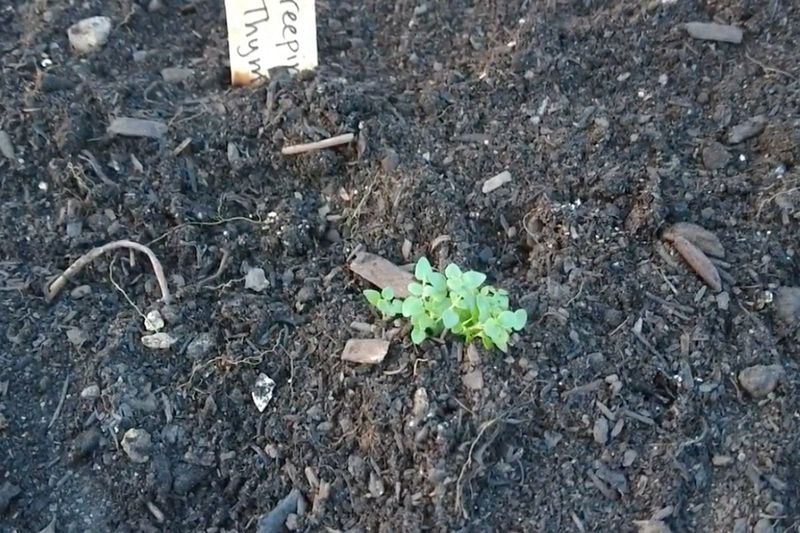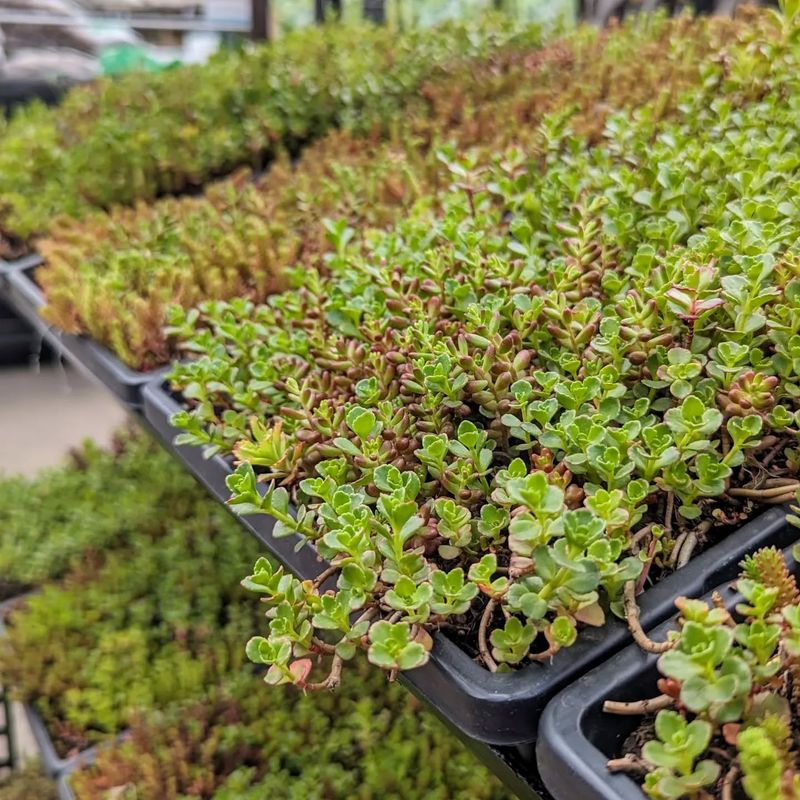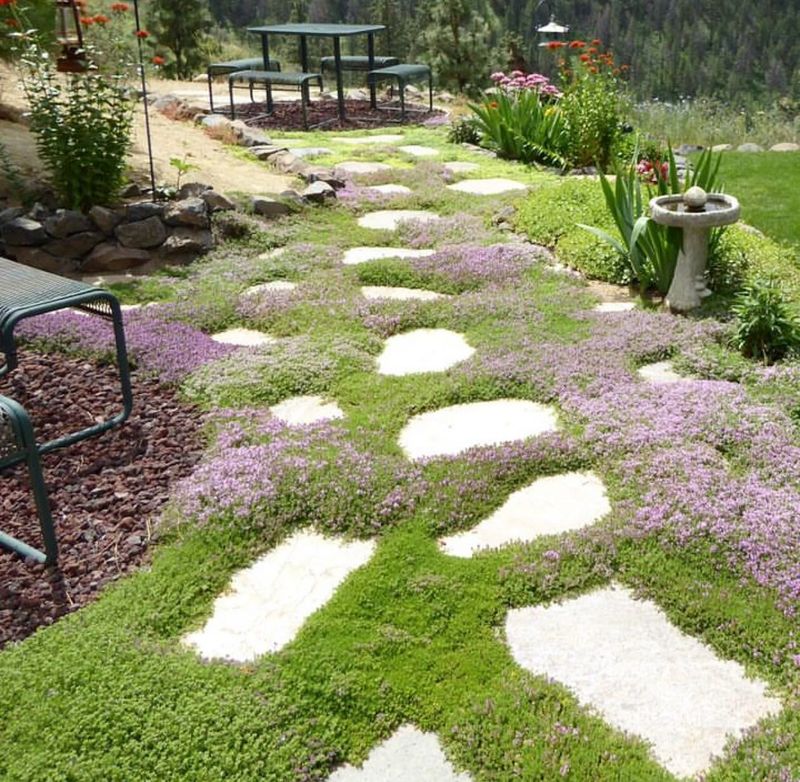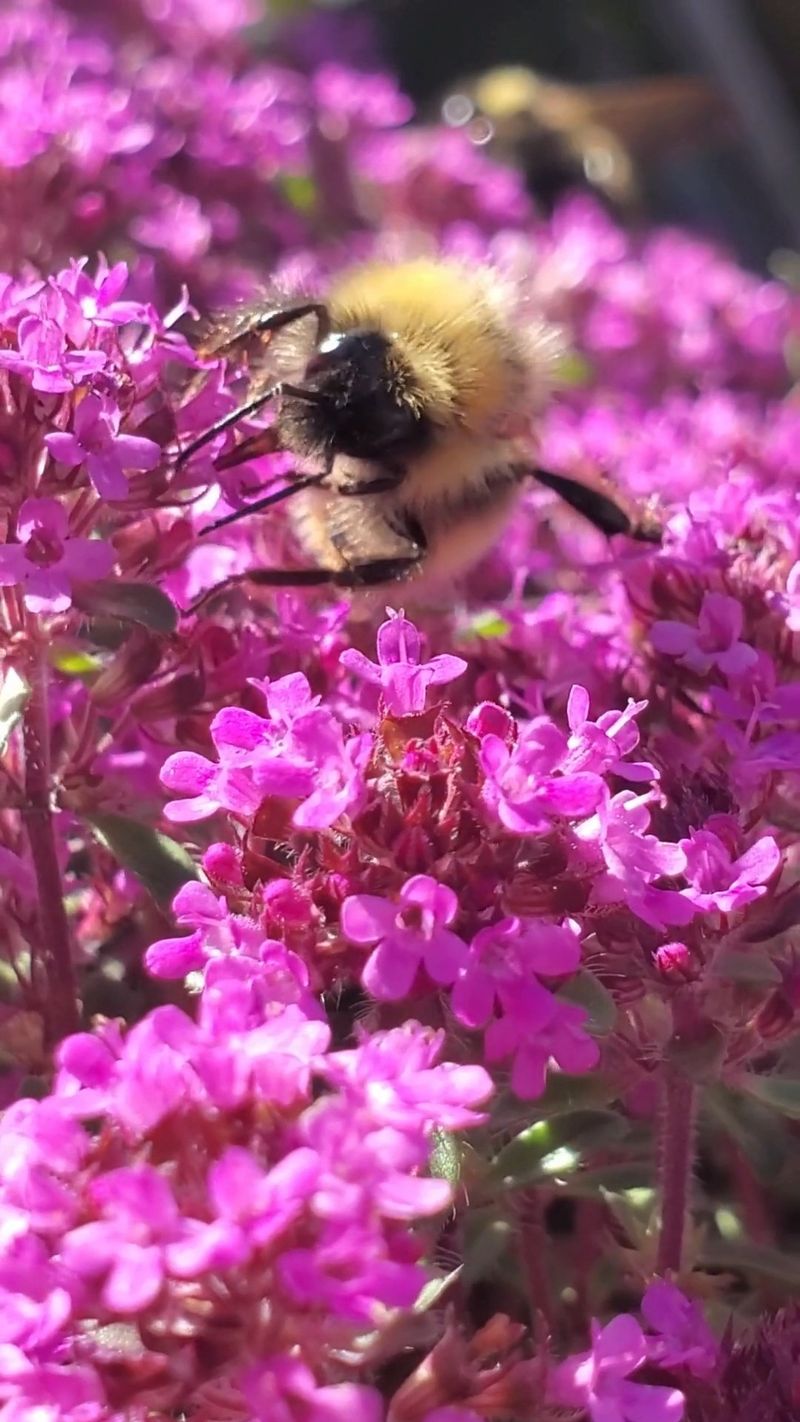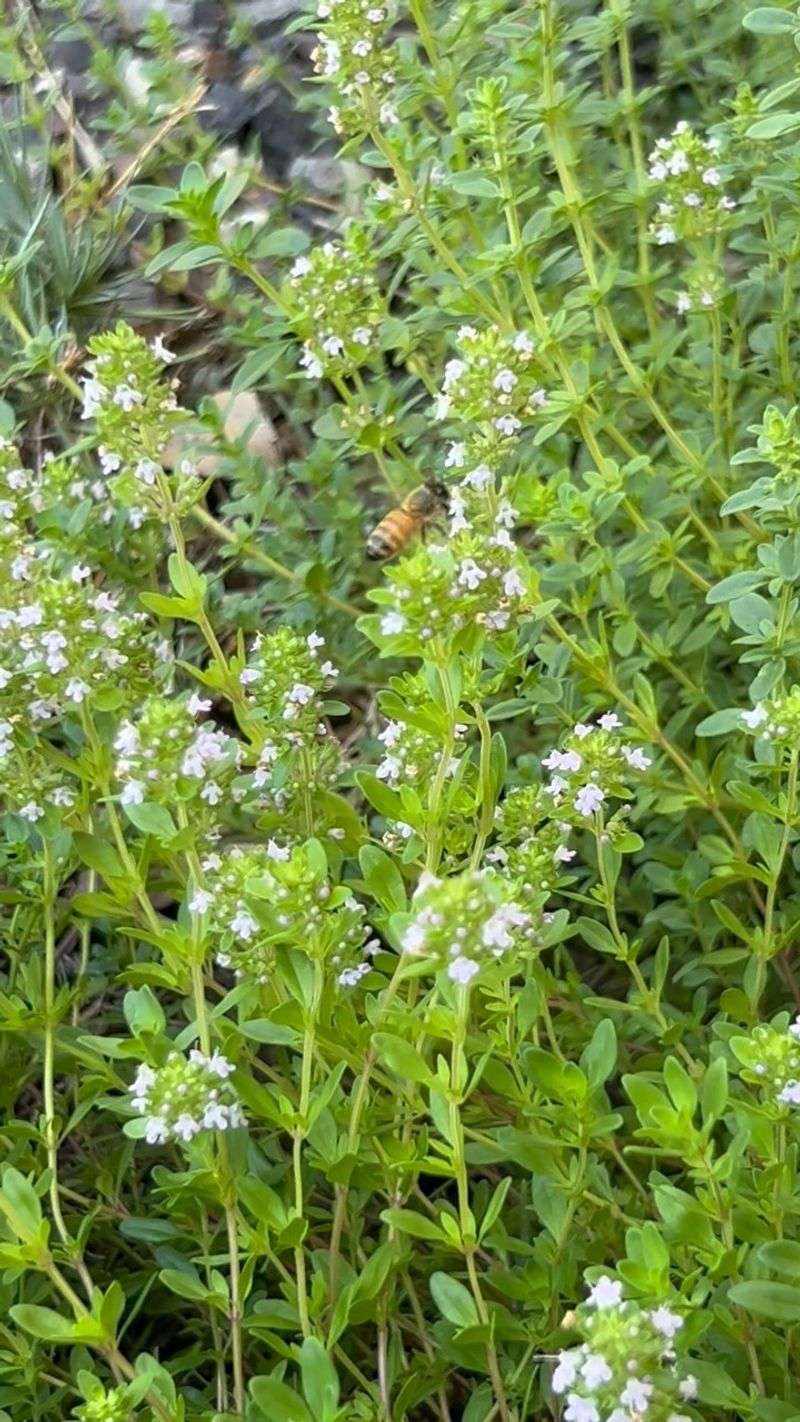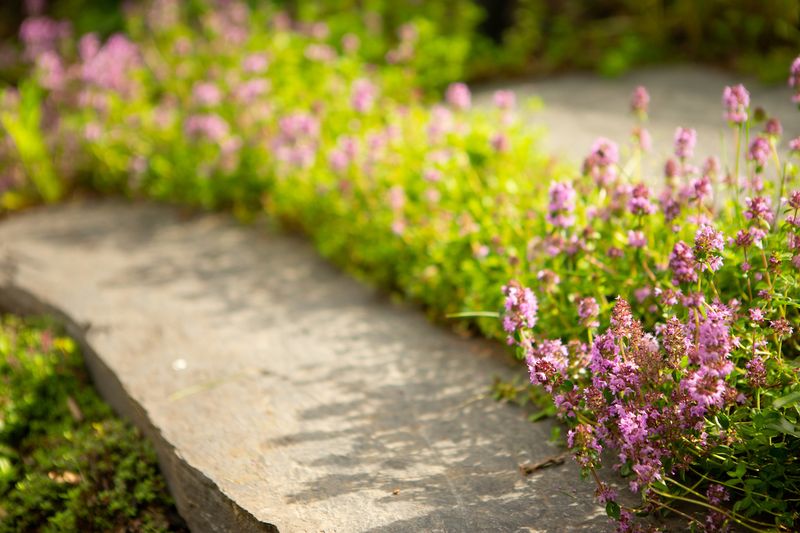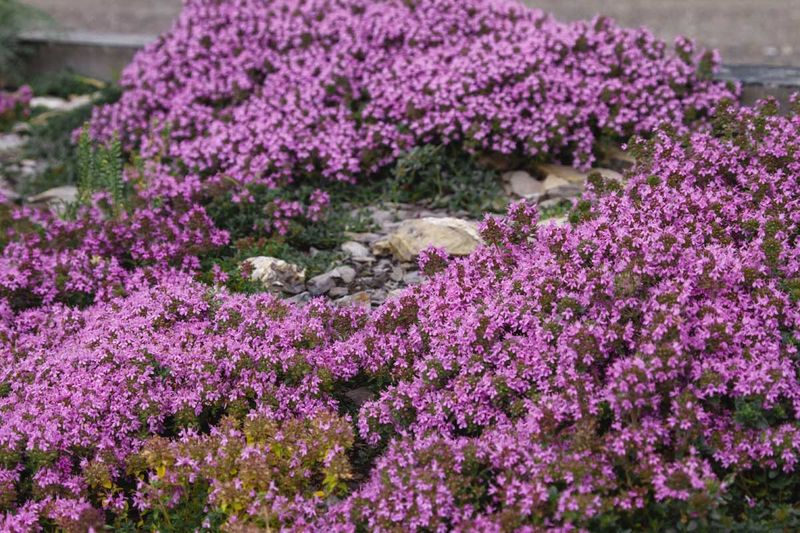Thinking of letting creeping thyme take root in your yard? Before you go all in, don’t put the cart before the horse! This hardy ground cover may seem like a dream, but it’s not all sunshine and roses.
From blooming perks to hidden quirks, here are 15 must-know facts to help you avoid biting off more than you can chew and plant with confidence.
1. Sun Requirements Matter
Creeping thyme craves sunshine like a solar-powered engine. For best results, plant it in spots that receive at least 6-8 hours of direct sunlight daily. Without adequate sunshine, your thyme will stretch and become leggy, producing fewer flowers and a less dense mat.
Partial shade locations can work in hotter climates, providing afternoon relief from scorching rays. However, deep shade is a no-go zone – your thyme will struggle, become sparse, and might eventually give up altogether.
2. Drainage Is Non-Negotiable
Poor drainage spells disaster for creeping thyme. Native to Mediterranean regions, these plants evolved in rocky, well-draining soils and absolutely despise wet feet. Standing water quickly leads to root rot and a sad, dead thyme patch.
Sandy or gravelly soil provides ideal conditions. If your soil tends to hold water, consider creating raised beds or adding plenty of coarse sand and perlite to improve drainage. A slight slope can also help excess moisture run off rather than pooling around roots.
3. Soil pH Preferences
Creeping thyme performs its ground-covering magic best in slightly alkaline to neutral soil, with a pH between 6.0 and 8.0. Before planting, grab an inexpensive soil test kit to check your garden’s pH level.
If your soil leans acidic (below 6.0), incorporate some garden lime to raise the pH. For excessively alkaline soils (above 8.0), mix in some sulfur or peat moss to bring it down. The right pH balance ensures your thyme can access the nutrients it needs for lush growth and vibrant blooming.
4. Spacing Determines Coverage Time
Plant spacing directly affects how quickly your thyme blankets the ground. Spacing plants 8-12 inches apart creates full coverage within a single growing season, while wider spacing takes longer but requires fewer plants.
For quick results, place plants closer together – around 6-8 inches apart. Budget-conscious gardeners might opt for 12-18 inch spacing, accepting that complete coverage will take an extra season. Remember that most varieties spread about 12-24 inches wide, eventually knitting together regardless of initial spacing.
5. Variety Selection Changes Everything
Not all creeping thyme varieties perform identically! ‘Elfin’ creates an ultra-low carpet barely reaching 1-2 inches tall, perfect for tight spaces between stepping stones. ‘Coccineus’ delivers stunning crimson flowers, while ‘Doone Valley’ features gold-splashed foliage for extra visual interest.
For areas with occasional foot traffic, choose tougher varieties like ‘Pink Chintz’ or ‘Woolly Thyme’ that bounce back after being stepped on. Match the variety to your specific needs – whether prioritizing flower color, height, spread rate, or durability.
6. Planting Season Affects Establishment
Spring planting gives thyme plenty of time to establish before winter arrives. Aim for after the last frost date in your region when the soil has warmed but before summer heat intensifies.
Fall planting works well in milder climates (zones 7-9), allowing roots to develop during cooler weather. Avoid summer planting unless you’re prepared for extra watering vigilance. Winter planting is generally unsuccessful except in frost-free regions.
Regardless of timing, water newly planted thyme consistently until established, usually about 3-4 weeks.
7. Weed Competition Requires Preparation
Established creeping thyme suppresses weeds naturally, but until it fills in, weeds will compete aggressively. Before planting, thoroughly clear the area of all existing weeds, including persistent root systems of perennial invaders.
Consider laying landscape fabric with holes cut for thyme plants, or apply a 1-inch layer of fine mulch between plants. Hand-pull any weeds that emerge immediately, before they can establish.
After a season or two, your thyme carpet will thicken enough to naturally prevent most weed growth.
8. Water Needs Change After Establishment
Freshly planted thyme needs consistent moisture to develop strong roots. Water deeply every 2-3 days for the first few weeks, ensuring soil stays evenly moist but never soggy.
Once established, creeping thyme transforms into a drought-tolerant champion. Reduce watering to once weekly in the absence of rain, and during extended heat waves, provide supplemental water only when plants show signs of stress.
Overwatering established thyme is far more dangerous than underwatering – when in doubt, stay on the drier side.
9. Foot Traffic Tolerance Has Limits
While creeping thyme handles occasional footsteps, it’s not a lawn replacement for high-traffic areas. Light, infrequent walking won’t harm established plants, making them perfect between stepping stones or for pathways used a few times weekly.
Daily trampling will create bare patches and damage the plants beyond recovery. For areas receiving regular foot traffic, incorporate actual stepping stones within your thyme groundcover to direct steps away from the plants themselves.
Children’s play areas require sturdier groundcovers or traditional turf.
10. Aromatic Properties Offer Bonus Benefits
Walking on creeping thyme releases a delightful herbal fragrance that most people find pleasant. This aromatic quality doubles as a natural insect repellent, particularly against mosquitoes and some garden pests.
Place thyme near seating areas or pathways where brushing against it releases its essential oils. Some gardeners plant it around vegetable gardens to confuse pests looking for crops.
While culinary varieties are edible, ground cover types often have stronger, less palatable flavors than upright culinary thyme, though still safe to taste.
11. Pollinator Attraction Is Significant
Flowering creeping thyme becomes a bustling pollinator highway! Bees absolutely adore the tiny blossoms, making it an excellent addition to any wildlife-friendly garden. Butterflies frequently visit too, creating a lively display of winged visitors during blooming periods.
The peak flowering time typically spans 3-4 weeks in early to mid-summer, depending on your climate zone. Some varieties offer a second, lighter bloom in fall if deadheaded after the first flush.
For maximum pollinator benefit, plant large patches rather than isolated plants.
12. Winter Appearance Varies By Climate
In mild winter regions (zones 8-9), creeping thyme often remains evergreen, providing year-round interest. The foliage may take on purple or bronze tints during colder months, adding seasonal color variation.
In colder climates (zones 5-7), expect some dieback and browning during winter. Don’t worry – the plants aren’t dead! They’ll resprout from the base when spring arrives.
Extreme cold zones (3-4) might see significant winter damage, requiring spring cleanup of dead growth before fresh leaves emerge.
13. Pruning Needs Are Minimal
One of creeping thyme’s greatest attributes is its low maintenance nature. Most varieties naturally maintain their low-growing habit without any pruning at all. After flowering, you can trim back spent blooms with scissors or hedge shears to encourage a tidier appearance and possible rebloom.
Every 3-4 years, consider a light trim in early spring to remove any winter-damaged sections and stimulate fresh growth. Avoid harsh cutting back, as woody stems may not recover well.
No fertilizer is typically needed or recommended.
14. Slope Stabilization Capabilities
Creeping thyme excels on slopes and banks where erosion control is needed. Its shallow but dense root system helps hold soil in place while the spreading foliage shields the ground from erosive rainfall impact.
For steep slopes, plant thyme more densely (6 inches apart) and consider using biodegradable erosion control netting until plants establish. Terracing extremely steep slopes still helps, as thyme has limits to what gradient it can stabilize.
Combine with deeper-rooted plants for comprehensive erosion protection on problem slopes.
15. Propagation Is Surprisingly Simple
Expanding your creeping thyme coverage costs nothing with easy propagation methods. Simply dig up established clumps in spring, divide them with your hands or a garden knife, and replant the divisions 8-12 inches apart.
Stem cuttings root readily too – snip 3-inch sections, remove lower leaves, dip in rooting hormone, and stick into moist potting mix. Keep humid until roots form in about 3-4 weeks.
Seeds work but grow slowly, taking 2-3 years to form a dense mat compared to 1 year for divisions or cuttings.

